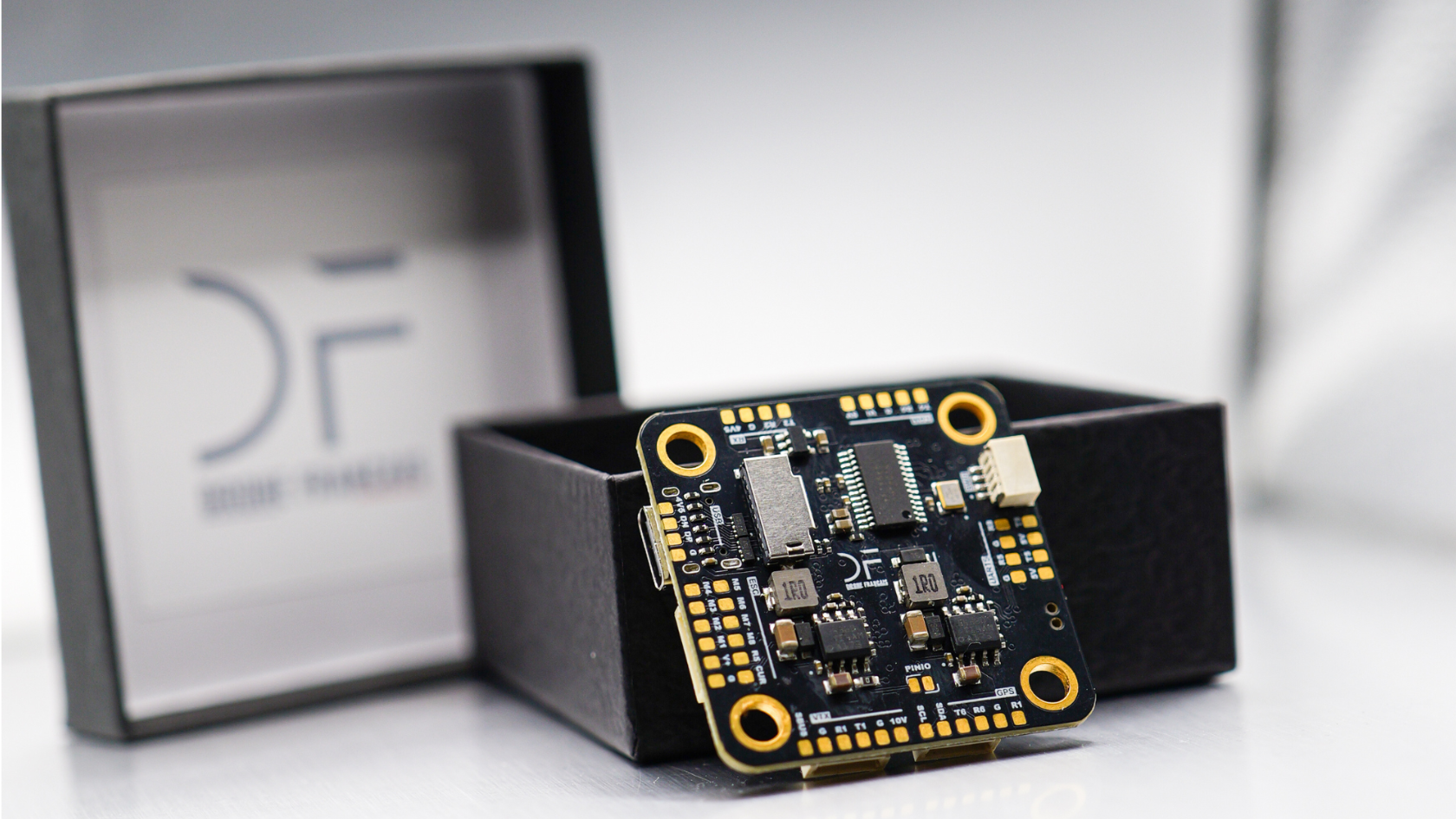In a world where conflicts are becoming increasingly technological, military drones have become key strategic tools. Used for reconnaissance, targeting, precision strikes or electronic jamming, these autonomous or semi-autonomous vectors must meet the highest standards of reliability, precision and sovereignty. The key to these performances lies in an often invisible but absolutely essential element: on-board electronics.
Composed of flight cardscontrollers, sensorsESC (speed controllers), these electronics are the drone's brain and nervous system. Its quality, robustness and control determine not only the success of a mission, but also a country's ability to remain technologically independent.
By developing the Abell flight cardflight card, French companies specializing in drone electronics have responded to the major challenge of providing armed forces with safe, modular, high-performance... and sovereign equipment.
The strategic role of on-board electronics in military UAVs
A drone is nothing without its electronics. Whatever its size - from the mini observation drone to the tactical combat drone - it needs on-board components to :
- stabilize in flight,
- receive and respond to instructions,
- collect and transmit data,
- and above all, adapt to its environment in real time.
In a military environment, these functions become critical:
- In the event of GPS jamming, you must be able to fly without outside help;
- Faced with signal-saturated conflict zones, transmission capacity must be secure and redundant;
- On assignments lasting several hours, thermal and energy management becomes a performance issue.
Every flight cardevery ESCevery sensor plays a part in this autonomous decision-making chain. A single weak link can jeopardize the mission.
Much higher standards than in the civilian sector
Military drones have to operate in extreme conditions:
- temperatures from -20 to +60°C,
- disturbed electromagnetic fields,
- unstabilized take-off conditions,
- intense vibrations (catapulting, hard landings),
- no ground infrastructure.
This is why military on-board electronics must be ruggedized, tested to rigorous standards (such as MIL-STD), and integrated into modular yet secure architectures.
Key technologies developed in France
Faced with the strategic challenge of on-board electronics, several French players have taken the initiative to develop national technological bricks, capable of competing with Asian products... while offering superior traceability and security.
The Abell flight card: the sovereign brain of French UAVs
The fruit of several years' development, the Abell flight card flight card embodies this commitment to industrial reconquest. Designed and manufactured in France, it is designed to :
- to meet the needs of military FPV drones,
- offer broad software compatibility (open source or proprietary firmware),
- integrate native data security (encrypted memory, protected ports),
- and ensure complete control of the software and hardware chain.
Abell has :
- several PWM channels for motor control,
- CAN, UART and I²C buses for dialog with other modules (sensors, telemeters, gimbals),
- an independent stabilized power supply,
- optimized thermal management, essential for UAVs with high on-board power.
Its great advantage: it can be adapted to different drone formats, from light quadcopters to long-range surveillance vectors.
ESCs and regulators made in France
In addition to flight maps, the French industry is structured around the manufacture of :
- Powerful ESCs, capable of withstanding up to 65A continuously, for high-performance motors;
- surge-resistant voltage regulators (BECs ) designed for military environments ;
- power supply filters, which protect electronics from interference, a crucial point in electromagnetically saturated environments.
These components are often overlooked in the civilian sector, but in a military context they make the difference between a reliable drone... and an unexplained crash.
Mastered firmware for confident control
A flight card is nothing without its firmware. By developing proprietary firmware, or firmware based on an open source platform that is free from any foreign dependency, French manufacturers ensure :
- source code integrity,
- rapid adaptation to every usage scenario,
- compatibility with NATO or DGA standards.
This level of control is essential not only to combat cyber threats, but also to ensure the long-term operability of our equipment.
Future challenges and strengthening technological sovereignty
Recent conflicts, such as those in Ukraine, have highlighted a stark reality: tomorrow's war will also be won in the field ofon-board electronics.
Untenable foreign dependence
Today, over 80% of the electronic components used in drones come from Asia, mainly China. This exposes users to :
- supply difficulties in the event of a geopolitical crisis,
- doubts about component integrity (dubious firmware, backdoors, counterfeit parts),
- an inability to upgrade systems quickly.
In the field of defense, this dependence is incompatible with the requirements of sovereignty.
Towards a sovereign electronics industry
Initiatives are emerging to correct this dependence. The France 2030 plan, the support of the DGAand industrial relocation efforts are giving rise to a new generation of French components:
- printed circuit boards,
- rugged microcontrollers,
- military connectors,
- open source and certified firmware,
- secure embedded AI modules.
These bricks concern not only UAVs, but also ground robots, naval systems and tactical satellites. We're talking about a major technological reconquest.
Increased exportability
By developing its own electronic building blocks, France is not only strengthening its national defense. It is also becoming capable ofexporting sovereign systems, of interest to partner countries also anxious not to depend on Asian or American giants.
UAVs equipped with sovereign components can be more easily integrated into joint systems, more rapidly upgraded, and safer for multinational operations.
On-board electronics is no longer a mere technical detail: it has become an issue of sovereignty, security and operational performance. Thanks to innovations such as the Abell flight card, hardened ESCs and made-in-France controllers, French military UAVs can now rely on components designed to withstand modern warfare... and win.
It's not just a question of having good drones, but of mastering what makes them fly, decide and survive. By supporting sovereign embedded electronics, France is investing in a decisive asset for its armed forces... and for the future of its defense industrial base.
